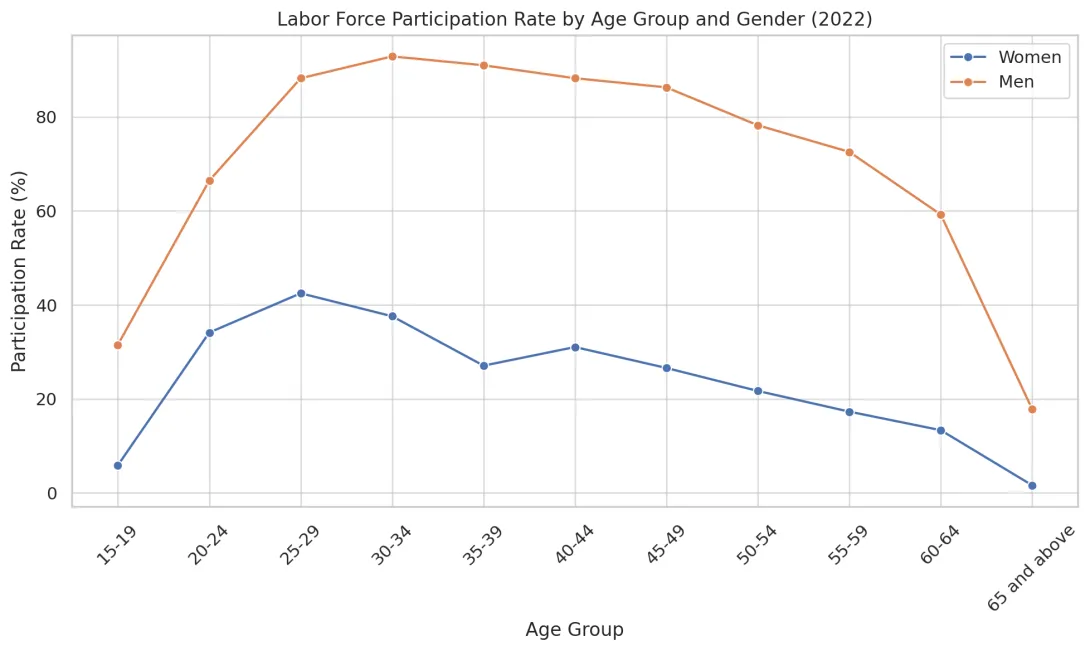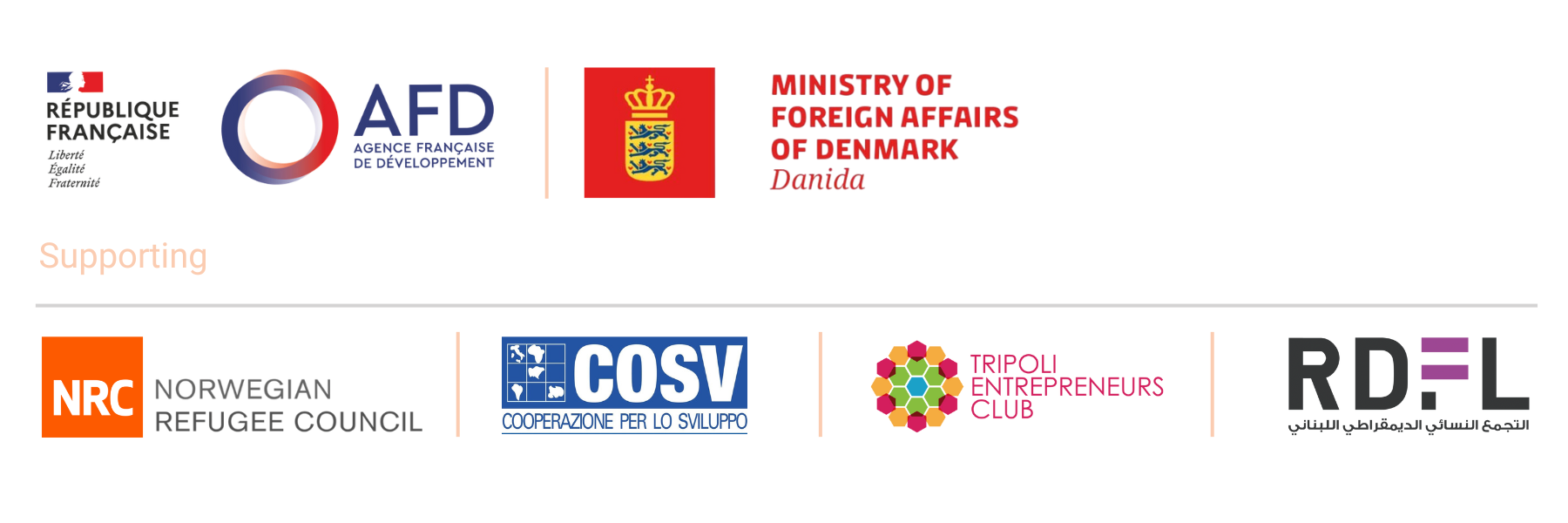
Despite improvements in female education and rights in Lebanon, the labor market continues to reflect deep-rooted gender inequalities. Using data from the 2022 Labour Force Survey by CAS and the ILO, this essay explores gender disparities in labor force participation, unemployment, formality of employment, and access to social protections. The insights help inform inclusive labor policies and gender-equity interventions.
1. Labor Force Participation Gap
The labor force participation rate among men is consistently and significantly higher than among women across all age groups.
- Peak Participation: Men’s participation exceeds 90% between ages 30–39, while women never surpass 43%, peaking at ages 25–29.
- Gender Gap: The widest gap occurs in prime working years (30–39), where the participation rate for men is more than double that of women.
- Implications: These gaps may stem from traditional gender roles, lack of child care infrastructure, workplace discrimination, and cultural expectations that prioritize domestic roles for women.
2. Unemployment Disparities by Gender
Unemployment rates are higher for women across nearly all age groups, particularly in early career stages.
- Youth Unemployment: Women aged 15–19 face a staggering 75.26% unemployment rate compared to 50.46% for men.
- Persistent Disparities: Even in the 25–29 age group, women’s unemployment is over 41.81%, while men’s is 34.28%.
- Long-term Challenges: The mismatch between educated female graduates and available job opportunities contributes to rising frustration and detachment from the labor market.

3. Employment Formality and Gender
Employment formality reflects structural barriers for both genders, but patterns vary:
- Higher Formal Employment Among Women: 43.59% of women in the labor force are in formal employment, compared to 35.53% of men.
- Men Overrepresented in Informal Jobs: A larger share of working men (64.47%) are in informal employment, versus 56.41% of women.
- Interpretation: Women may be employed in more regulated sectors (e.g., education, healthcare), whereas men are more likely to work in construction, retail, and trade—sectors with limited oversight and informality.
4. Gender Gaps in Social Protection (Health Insurance)
Access to health insurance reflects another critical aspect of employment quality:
- Women are more likely to be insured: 66.7% of employed women benefit from health insurance, compared to 52.59% of men.
- Uninsured Men: Nearly half of working men (47.41%) lack health insurance, reinforcing the link between male-dominated informal jobs and the absence of social security.
Conclusion and Recommendations
Lebanon’s labor market presents clear gendered barriers at every level—from participation and employment type to job quality and benefits. Addressing these disparities requires:
- Expanding access to child care and flexible work arrangements to retain women in the workforce.
- Increasing incentives for formal employment and penalizing informal sector abuse, especially in male-dominated industries.
- Targeted programs for youth and female employment, including entrepreneurship support and quota systems in underrepresented sectors.
- Improving job matching services to align women’s educational attainments with market needs.
Lebanon cannot afford to leave half its labor potential underutilized. An inclusive and equitable labor policy framework is essential to harnessing the country’s full economic and human capital.
